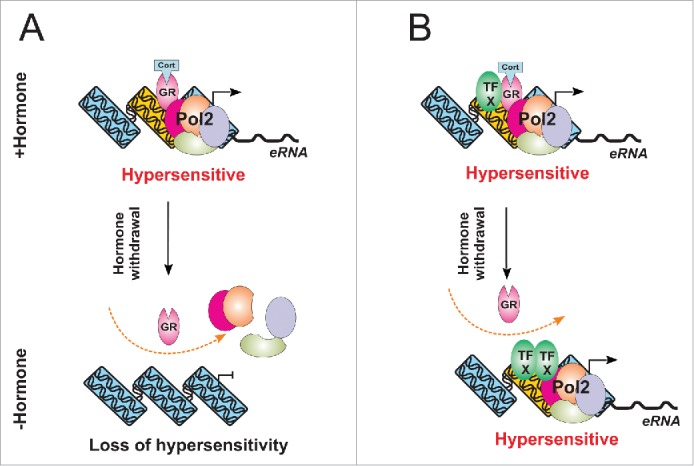Figure 2.

A model for hypersensitivity regulation at transient and persistent DHSs. (A) GR loading at transient sites recruits chromatin remodelers (not shown) leading to an increases accessibility at these sites, as well as Pol II recruitment and release of enhancer RNA (eRNA). Upon hormone withdrawal GR dissociation from GREs leads to dissociation of the remodelers and consequently to a loss of accessibility at these sites. (B) At the persistent DHSs, the GR-created accessibility allows binding of secondary TFs. These factors remain at the sites even after hormone withdrawal and continue to remodel it. This carry-over hypersensitivity may over time return to its initial state or lead to a permanent open state at the site.
